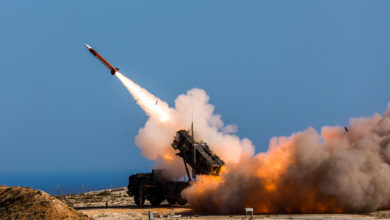Royal Navy Trials Maiden AI-Based Air Defense System
The Royal Navy has deployed an artificial intelligence (AI)-based air defense system for the first time in a sea exercise to counter live missiles off the coast of Scotland.
The Formidable Shield exercise, involving over 3,000 soldiers, tested “the ability of NATO warships to detect, track and defeat incoming missiles, from sea-skimming weapons travelling at twice the speed of sound just above the waterline, to ballistic missiles,” the service stated.
The three-week exercise provided an opportunity for the UK’s Defence Science and Technology Laboratory and industry partners to test their “Startle” and “Sycoiea” systems under battle conditions.
AI-Based Air Defense Systems
“‘Startle’ helps monitor the ‘air picture’ by providing ‘real-time recommendations and alerts,’” the statement said.
“Sycoiea” identifies incoming missiles and assists personnel in choosing the best weapon more quickly than human intervention alone to neutralize the threat, the statement added.
“Observing Startle and Sycoiea augment the human warfighter in real time against a live supersonic missile threat was truly impressive – a glimpse into our highly-autonomous future,” Lieutenant Commander Adam Leveridge, Weapon Engineer Officer, HMS Lancaster.
For the first time the Royal Navy has used Artificial Intelligence to fend off missile attacks during #NATO's Formidable Shield exercise off Scotland.@hms_lancaster and @HMSDragon have tested cutting-edge software against supersonic threats
Learn more: https://t.co/F9iRvxiXqE pic.twitter.com/LJKcsrDId0
— Royal Navy (@RoyalNavy) May 29, 2021
Tested on Three Warships
Two of the three warships involved in the exercise — destroyer HMS Dragon and frigate HMS Lancaster — are deploying AI and machine learning applications for the first time, giving military personnel practical experience.
The third vessel, HMS Argyll, “has been testing upgraded software and developing tactics to push the limits of her Artisan Radar and Sea Ceptor” air defense missiles.
“The sheer weight of hardware brought together in this exercise, and the chance to test the teams and systems against real-speed supersonic sea skimming and ballistic targets cannot be underestimated,” said Lieutenant Commander Richard Dobson, HMS Argyll’s Principal Warfare Officer.












